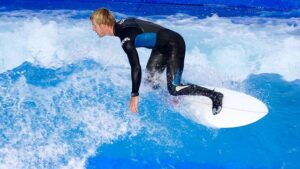Choosing the right surfboard size is vital for beginners looking to enhance their surfing experience. Longer boards (8-12 feet) offer stability and buoyancy, aiding in paddling out and catching waves, thereby boosting confidence and accelerating learning curves. As skills improve, surfers can transition to shorter or mid-range boards tailored to their comfort and evolving abilities, offering better maneuverability or a balance between stability and performance. For beginners, soft foam or epoxy materials ensure lighter, less fragile boards suitable for various conditions, facilitating practice without feeling overwhelmed.
Introducing our comprehensive guide on choosing the perfect surfboard for beginners, tailored to help you navigate the vast range of sizes available. From understanding fundamental factors like surfboard length to exploring options for various skill levels, this article covers it all. Whether you’re drawn to the agility of short boards, seeking stability in mid-range boards, or craving smooth rides with long boards, we break down each option, ensuring a seamless transition into the world of surfing.
Understanding Surfboard Sizes for Beginners
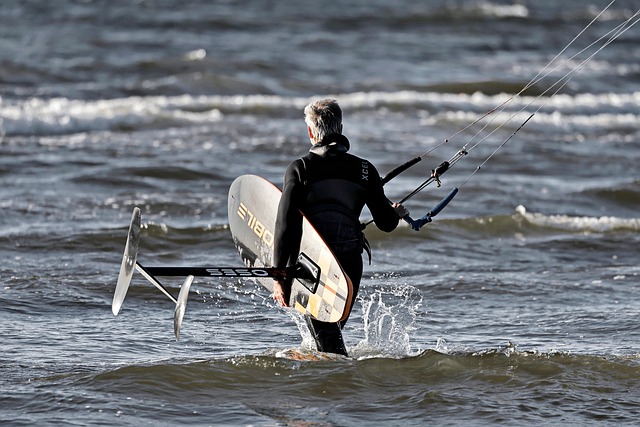
Choosing the right surfboard size is essential for beginners looking to catch their first waves. With various options available, selecting one can seem daunting. The key is understanding that surfboards are designed for different skill levels and water conditions. For newcomers, it’s recommended to opt for a board that offers stability and buoyancy, often characterized by longer lengths and larger volumes. These features make it easier to paddle out and catch waves, fostering confidence and improving learning curves.
A common rule of thumb is to pick a board that allows you to stand with both feet flat on the deck without feeling unstable. This generally translates to boards measuring between 8 to 12 feet (2.4 to 3.7 meters) for most beginners. Wider boards provide better floatation, while longer boards can glide across the water more smoothly, making it simpler to turn and control. Remember, as you gain experience, you can experiment with different sizes based on your comfort level and evolving surfing skills.
Factors to Consider When Choosing a Surfboard Length
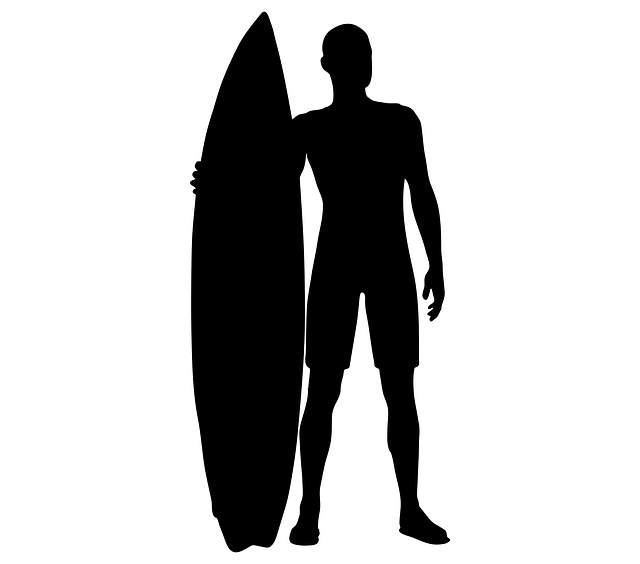
When choosing a surfboard, one of the most crucial factors is considering your skill level and experience. For beginners, a longer surfboard is often recommended as it provides better stability and makes it easier to catch waves. Longer boards typically have a larger surface area, which helps in balancing and gliding across the water. This stability is essential for gaining confidence and learning the basics of surfing without feeling overwhelmed by the board’s movements.
Additionally, beginners should factor in their body weight and overall comfort. Heavier individuals might prefer slightly longer boards to support their weight, ensuring a more controlled experience. Conversely, lighter surfers could opt for shorter boards that offer better maneuverability and agility. The right length will enable beginners to focus on learning techniques like paddling, turning, and standing up without worrying about the board pulling them under or being too difficult to control.
Short Boards: Ideal for Learning and Maneuverability

Short boards, also known as mini or shorty boards, are a popular choice among surfboard enthusiasts for good reason. With their compact size and lightweight construction, they offer unparalleled maneuverability, making them ideal for beginners looking to catch waves and improve their skills. These surfboards allow riders to perform sharp turns, cut through the water, and easily change directions, fostering a fun and engaging learning experience.
Perfect for smaller waves, short boards enable beginners to gain confidence by successfully navigating breaks that might otherwise be daunting on a longer board. Their smaller size also makes them easier to carry and store, appealing to those who may not have access to a full-size surfboard or prefer the convenience of a more portable option. Whether you’re a newbie surfer seeking to conquer your first waves or an experienced rider looking for a versatile board for specific conditions, a short board could be the perfect addition to your quiver.
Mid-Range Boards: Balancing Performance and Stability
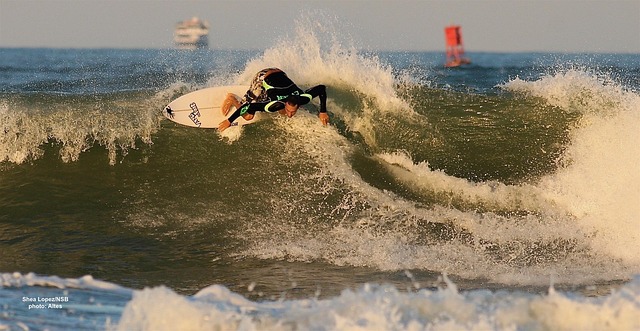
Mid-range surfboards are ideal for those looking to transition from a beginner’s board to something that offers more performance potential without sacrificing too much stability. These boards strike a perfect balance, providing excellent maneuverability and speed in smaller waves while still offering enough flotation for beginners to catch more waves with confidence. The versatility of mid-range designs makes them suitable for various surfing conditions and skill levels, making them a popular choice for those just starting their surfing journey who want to explore their options without committing to an extreme board type.
For surfboard beginners, stability is crucial for learning to paddle, catch waves, and stand up. Mid-range boards typically have more volume than beginner’s boards, which contributes to better stability and buoyancy. This allows newcomers to focus on mastering the fundamentals without feeling too restricted or unstable in the water. As they gain confidence and skill, these versatile boards can also adapt to more advanced maneuvers, making them a great investment for long-term use.
Long Boards: For Smooth Riding and Cruising
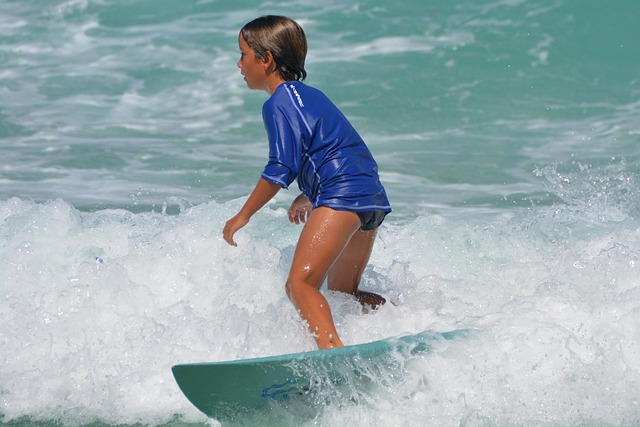
Long boards are a popular choice among both seasoned surfers and beginners looking for a smooth riding experience. Designed with longer and wider shapes, they offer enhanced stability and buoyancy, making them ideal for cruising along waves with ease. For newcomers to the sport, a long board can be an excellent starting point, as it allows them to focus on developing their balance, paddling skills, and understanding of wave patterns without feeling overwhelmed by too much speed or agility.
These boards typically range from 8 to 12 feet in length, providing ample room for riders to stand comfortably and maintain control. The extra length also reduces the impact of waves, making them perfect for gentle surf conditions, which is why they’re often recommended as a surfboard for beginners. Whether you’re looking to relax on the water or simply enjoy the ride, long boards offer a laid-back surfing experience that’s both accessible and enjoyable.
How to Determine the Best Fit for Your Skill Level
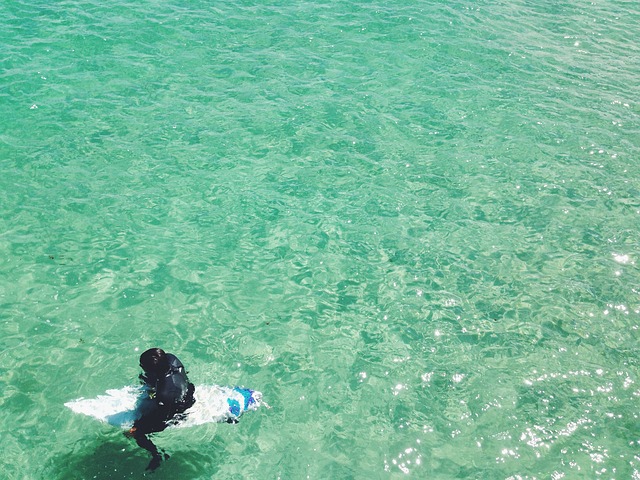
When choosing a surfboard, one of the most important factors is matching it to your skill level. For beginners, a longer surfboard with a wider tail and fuller outline is ideal. These boards offer more stability and make catching waves easier, allowing you to focus on learning techniques like paddling and balancing. Look for models designed specifically for newcomers; they often come in soft foam or epoxy materials, which are lighter and less fragile than traditional boards.
The best fit depends on your comfort level, body weight, and the type of surfing you intend to do. For instance, a shorter board might be suitable if you’re an intermediate surfer looking to perform tricks. Beginners should aim for a board that allows them to stay afloat effortlessly, enabling them to practice in various conditions without feeling overwhelmed.
